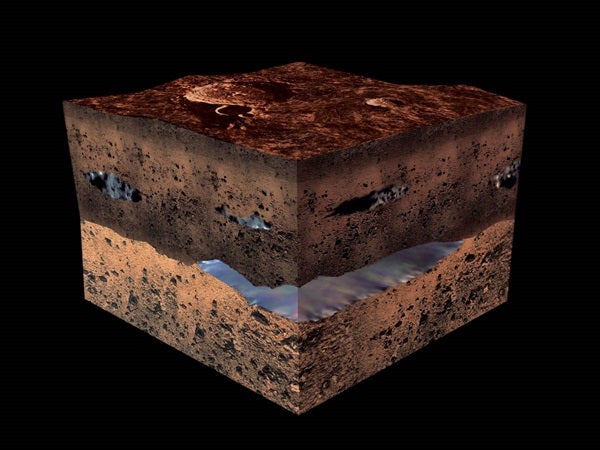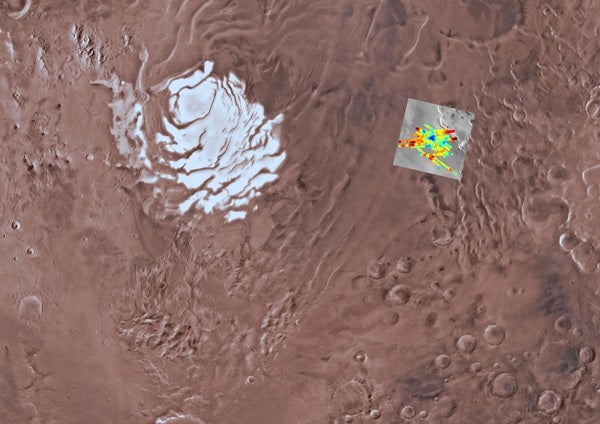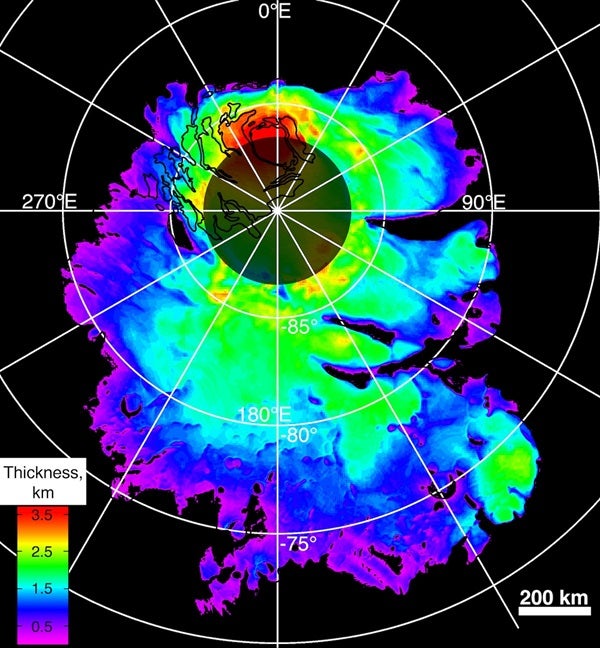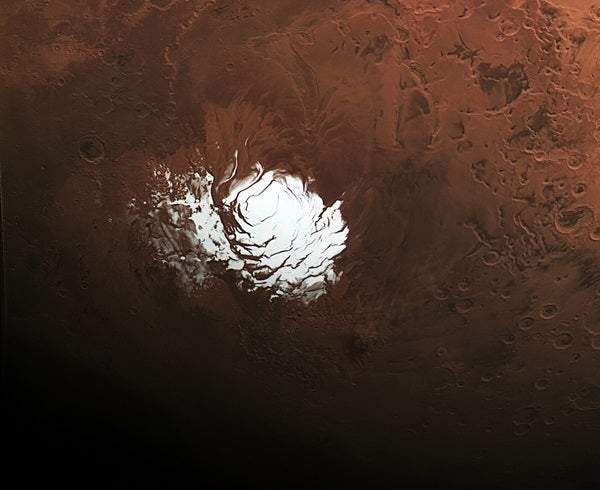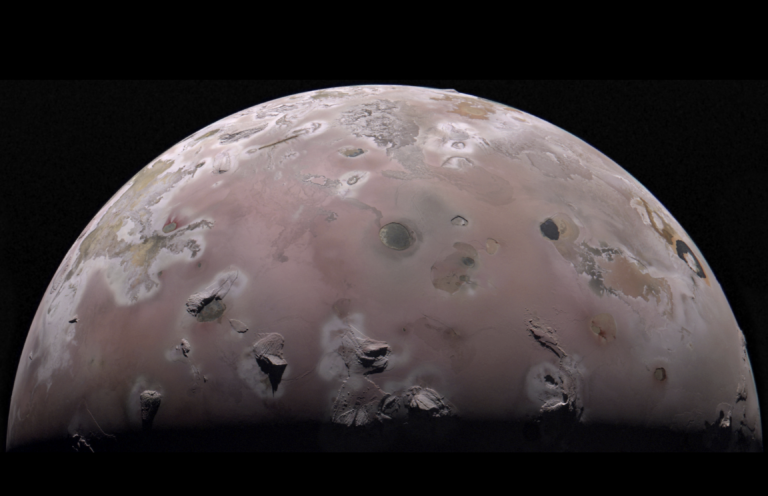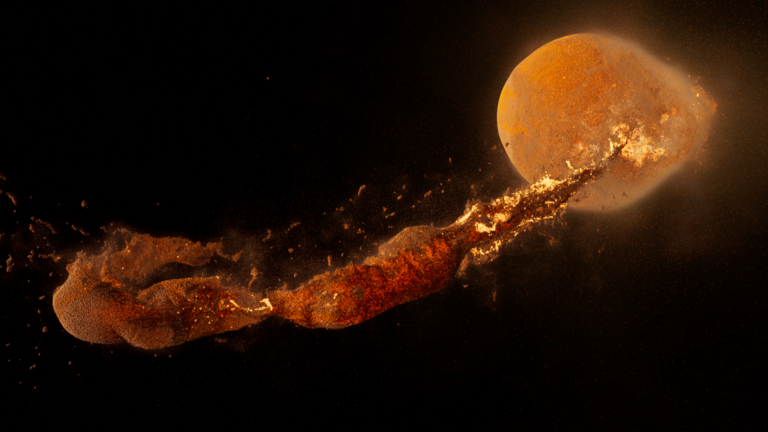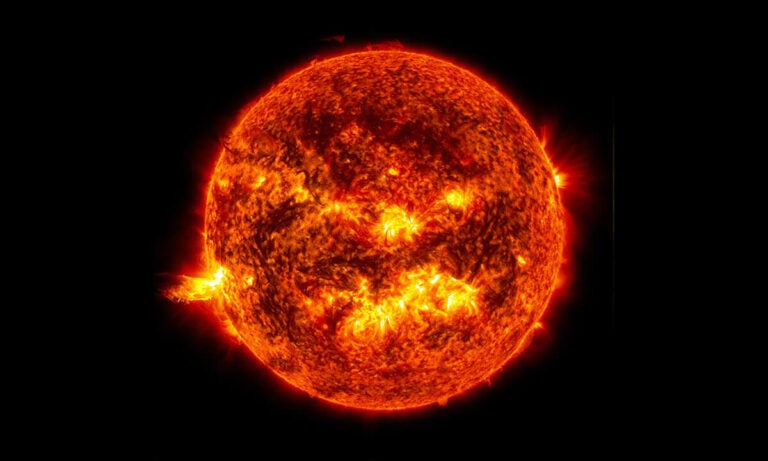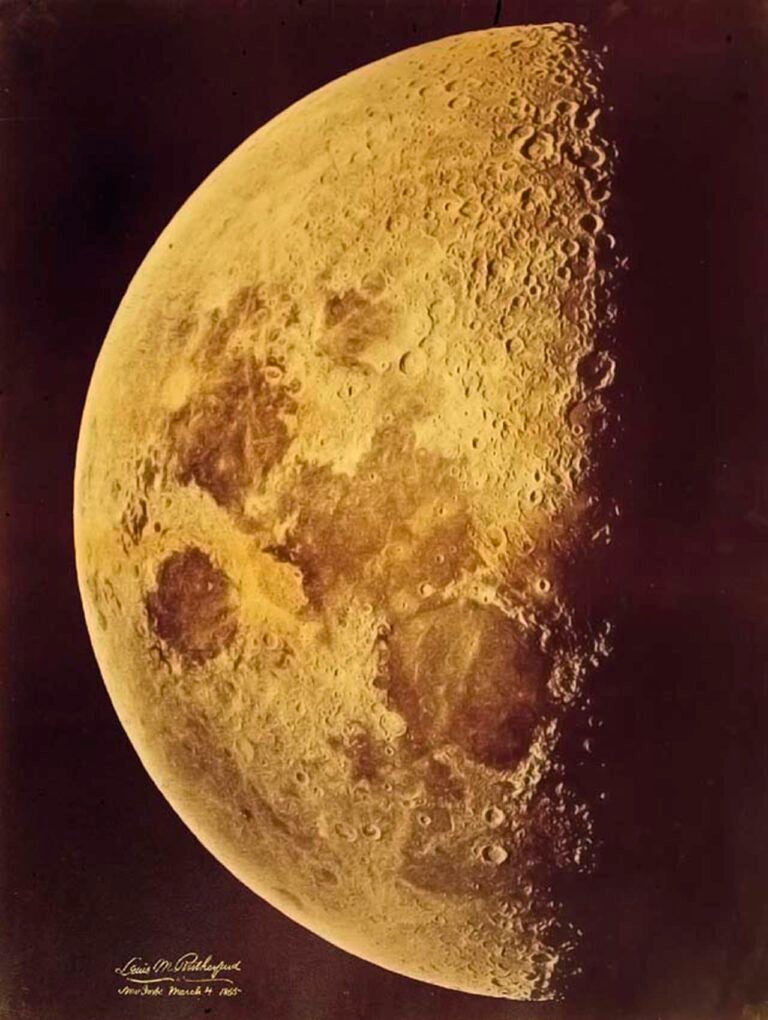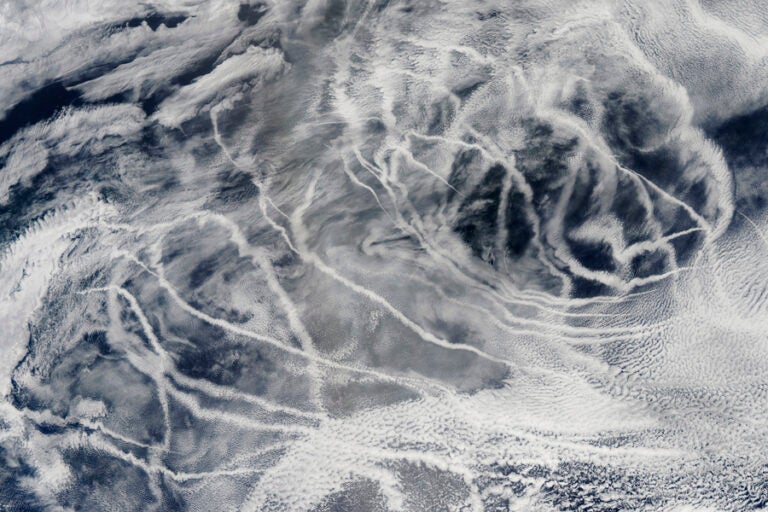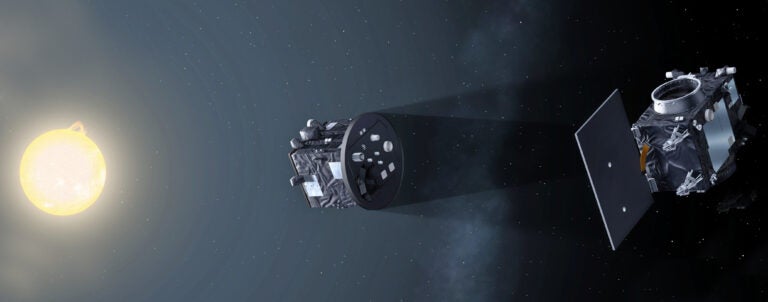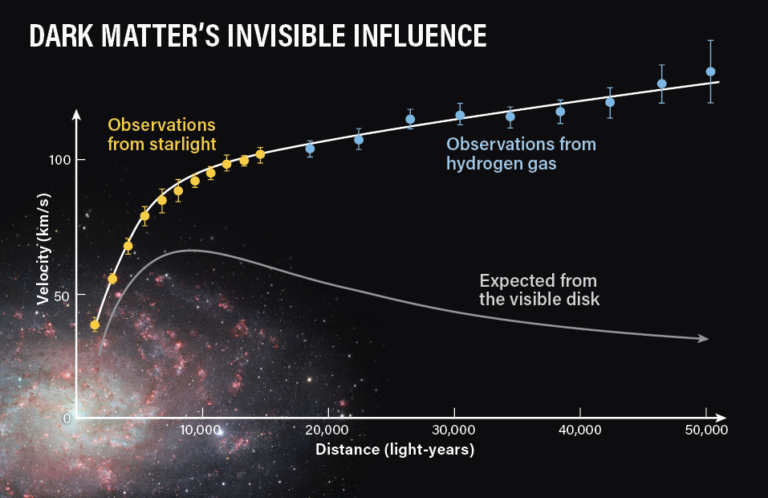The debate over the existence of underground water on Mars is heating up, even though some scientists argue it’s too cold there. Others, meanwhile, say there’s now better evidence than ever for liquid deposits near the martian south pole.
Finding the real answer, says geophysicist Daniel Lalich of Cornell University, a critic of the idea, might require us to drill down to search for the liquid — although it is thought to be located about 1 mile (1.6 kilometers) beneath the martian surface.
“It’s not going to happen anytime soon,” Lalich tells Astronomy. “But if we conclusively want to know, then [drilling] might be the only way.”
Do subsurface lakes exist on Mars?
Scientists proposed in studies in 2018 and 2020 that bright radar reflections observed by the Mars Express probe were caused by deposits of liquid water. This suspected water, thought to be warmed by heat from the planet’s interior, was traced to beneath the frozen layers of ice and dust around the martian south pole — an area much larger than Mars’ visible southern ice cap.
The reflections looked very different from the radar signals usually caused by ice, and occurred only in a small area of the Ultimi Scopuli region, about 300 miles (480 km) from the geographic pole.
Analysis suggested the reflections were caused by an abrupt interface between the ice and an unknown material that absorbed more of the radar signal. The researchers interpreted this unknown material as deposits of liquid water.
The press, however, called the largest of the deposits an “underground lake on Mars.”
Then, late last month, many of the same scientists published a third study in Nature Communications, which affirmed their previous findings and argued against other interpretations.
If those deposits of liquid water really exist beneath the martian surface, then they probably contain the only liquid water present on Mars. And that could have a profound impact on how we search for martian life.
Searching for martian life underground
It’s thought that Mars’ frozen layers are mostly composed of water ice. And if the ice melts where these layers meet the crust, then meltwater could form martian analogs of the subglacial lakes that exist beneath the Antarctic ice sheet on Earth.
So far, scientists have found more than 400 subglacial lakes in Antarctica. The largest is Lake Vostok, which is about the size of Lake Ontario and buried beneath more than 2 miles (3 km) of ice.
Some of these lakes are teeming with microorganisms that seem to be feeding on minerals in crushed rock. That suggests that if Mars had surface water in the past, and if life evolved there, then some martian microbes might still survive today in these liquid deposits.
“In Antarctica, there are bacteria everywhere — in the ice, on the surface of the [subglacial] lakes, and in the water of the lakes,” geophysicist Elena Pettinelli of Roma Tre University in Italy and author of the latest study tells Astronomy. “So that is the hope on Mars.”
She says there appear to be several underground bodies of water in Mars Ultimi Scopuli region, with the largest up to 12 miles (20 km) across. But it’s not known how deep the deposits are, or if they’re much more than liquid veins embedded in the ice.
How Mars lakes differ from Earth lakes
In any case, the water deposits are unlikely to be like the subglacial lakes on Earth. That’s because, to remain unfrozen at such extremely low temperatures, the martian lakes would have to be saturated with salts.
Critics, meanwhile, argue Mars is too cold for even hyper-saline brine — water with extremely high levels of dissolved salts — to stay liquid underground. To investigate, Pettinelli’s team studied how radar pulses were absorbed by the layers of ice and dust, which helped them model how heat flows from the planet’s interior through the frozen region.
Their research suggests that temperatures warmer than –100 degrees Fahrenheit (–73 Celsius) beneath the base of the frozen layers — the so-called basal ice — are a “reasonable assumption.” And they calculate this location might be as warm as –45 F (–43 C), which would be warm enough for hyper-saline water to exist in liquid form.
But geophysicist Stefano Nerozzi of the University of Arizona, who wasn’t involved in the latest study, notes that according to heat-flow modeling, the warmest temperature beneath the base layers is about –112 F (–80 C). That is too cold for any water to remain in liquid form — even water with the maximum possible concentration of the salt calcium perchlorate, which gives water the lowest possible freezing point but is uncommon in the southern hemisphere of Mars.
“Even in their most optimistic scenario, the basal ice is still too cold to melt,” he tells Astronomy.
Why has Mars subsurface water remained hidden?
The new study also addresses why signs of underground water haven’t been seen by another probe, the Mars Reconnaissance Orbiter (MRO). The researchers argue that the MRO’s radar doesn’t use the same radio frequencies as the radar on Mars Express, preventing it from penetrating deep enough to detect the liquid.
Lalich explains that’s a consequence of the higher radio frequencies MRO radar uses to obtain its higher resolution. He also adds that it will continue to be a problem until newer radar is deployed on a future probe.
But Lalich is also concerned that the new study rejects the idea that the radar reflections could be caused by radio interference from the structure of the ice and dust layers, an issue he details in recent research in Nature Astronomy.
Pettinelli’s team examined that, too. But their analysis concludes the new values for the absorption of the radar signal suggest that interference isn’t a problem. However, “the spread of values they get is enormous, and that huge spread is actually good evidence for interference,” Lalich says.
So is their really liquid water on Mars?
Proponents of underground water on Mars can point to another recent study in Nature Astronomy, which reports what could be indirect evidence for a subsurface lake on Mars. And they found it on the martian surface.
Glaciologist Neil Arnold at the University of Cambridge tells Astronomy that his team has detected a depression in the frozen landscape above the largest supposed water deposit at Ultimi Scopuli. The evidence comes in the form of laser altimeter data from Mars Global Surveyor.
Similar depressions have been detected above subglacial lakes in Antarctica, where they are caused by changes in the velocity of the overlying ice due to the lower friction of water underneath. But the depression on Mars is slight, and it’s not conclusive evidence for a subsurface lake.
“There’s a subtle variation in the local slope,” Arnold says. From the middle, “you wouldn’t think you were walking up a hill.”
Pettinelli admits the issue of the deposits of water on Mars will remain unresolved for many years to come. But “if there is more evidence about the possibility that there is a lake there, it makes you think about the exobiology,” she says, using a term for alien life.
And Lalich notes that different researchers have different ideas about the cause of the radar reflections at Ultimi Scopuli, but nobody can know for sure. “It’s not like we have a detailed picture of what it looks like down there,” he says.

